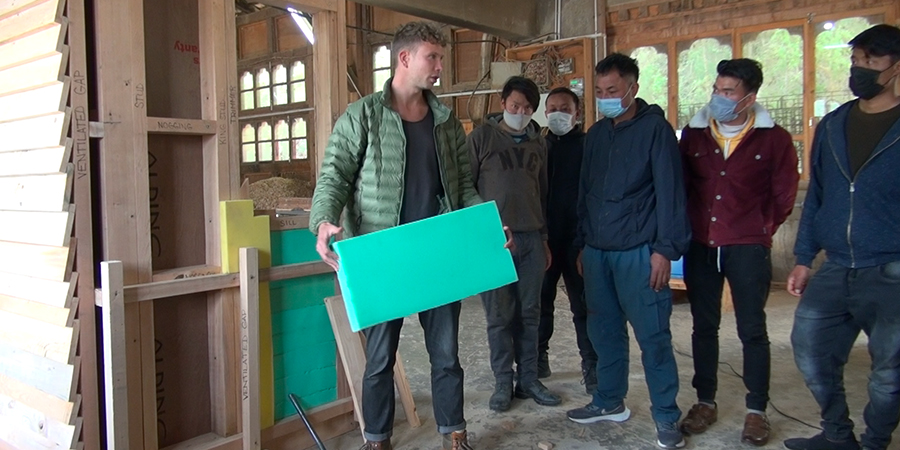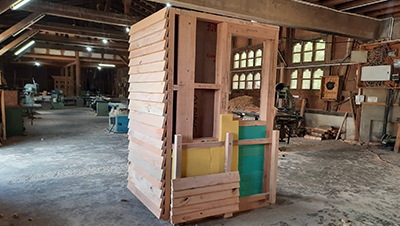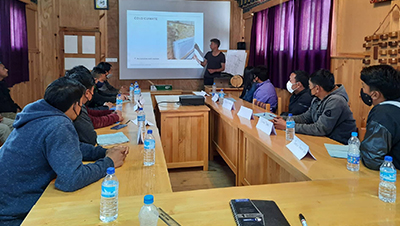 Insulating homes or building an energy-efficient house is a fairly new concept in Bhutan. Although home energy-efficiency studies were conducted and guidelines for green buildings were developed, the implementation is yet to gain momentum. In Bumthang, which is a district that requires the highest amount of energy to heat a home as per studies, a Czech architect recently trained residents on home insulation.
Insulating homes or building an energy-efficient house is a fairly new concept in Bhutan. Although home energy-efficiency studies were conducted and guidelines for green buildings were developed, the implementation is yet to gain momentum. In Bumthang, which is a district that requires the highest amount of energy to heat a home as per studies, a Czech architect recently trained residents on home insulation.
 During the training, trainer Matěj Vacek built a model of an insulated wooden home. He said insulating a home is fairly simple. If one finds correct insulation materials such as glass wool, polystyrene and mineral wool among others in the market, you’re ready to go.
During the training, trainer Matěj Vacek built a model of an insulated wooden home. He said insulating a home is fairly simple. If one finds correct insulation materials such as glass wool, polystyrene and mineral wool among others in the market, you’re ready to go.
One can also opt for natural materials such as wood fibreboard, hemp and straw which have to be processed in factories. The trainer used sponges, only for demonstration purposes. Two layers of insulations have to be fitted on the wooden frames.
“Once we have the insulations fitted, we of course want to cover it with claddings. It can be any kind of cladding but it shouldn’t be touching the insulations. Therefore, we need to create something called the ventilated gap which is usually between four to five centimetres thick. As the sun shines on the claddings, it heats the inside of the buildings. In summer, they help in cooling down the house by blocking direct sun rays. And the ventilated gap prevents any damage caused by moisture,” said Matěj Vacek, Instructor, Technical Training Institute, Chhumey, Bumthang.
With all the insulation and claddings fitted, the structure will be around twenty times warmer inside compared to an uninsulated house. This means with an insulation, you require lesser firewood or lower heater temperature to heat your home.
The building and appliance sector in Bhutan contributes to over 40 per cent of the total energy consumption, ahead of the transport and the industry sectors as per the National Energy Efficiency and Conservation Policy. The policy which was launched in 2019 aims at reducing energy consumption in buildings, household appliances, industries and transportation.
With an insulated home, one can save energy and reduce your carbon footprint. It also means the country can export more electricity.
“As Bhutan is trying to stay carbon negative, if you’re having an uninsulated home, you’re not as environmentally friendly anymore. Insulation is an extra investment you have to make in the beginning but approximately in 15 to 20 years, you will get back your investment and then the rest of the lifespan of the house, you’re saving this money,” added the instructor.
Participants, who are the working employees of various wood-based businesses in Bumthang said concerted government interventions could help promote the construction of energy-efficient buildings in the country.
 The Technical Training Institute in Chhumey and U Dee Wood Manufacturing and Furniture Unit conducted the four-day training. The Helvetas Swiss Interco-operation funded the training.
The Technical Training Institute in Chhumey and U Dee Wood Manufacturing and Furniture Unit conducted the four-day training. The Helvetas Swiss Interco-operation funded the training.
“In Bhutan, we don’t have insulation materials readily available in the market. If the materials become available, it is something doable,” said Tashi Dawa, a participant.
“I think advocacy campaigns would attract people to have their homes insulated. All other required resources are available in Bhutan except the insulation materials,” said Pema Choden, another participant.
Insulating homes is one of the key interventions targeted at reducing building energy consumption. With domestic energy requirements set to rise in the next few years, construction practices such as insulating buildings will help ease the pressure on the country’s energy sources.
Kipchu, Bumthang





